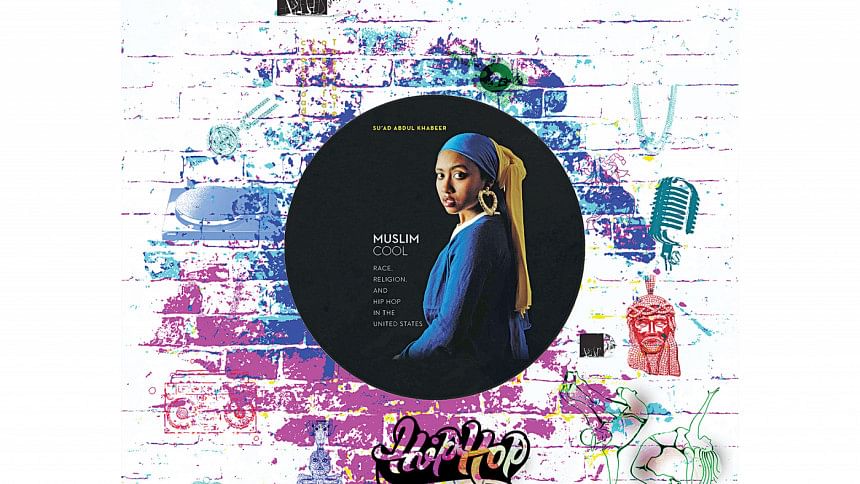Su’ad Abdul Khabeer on what it means to be Muslim and cool

Su'ad Abdul Khabeer is an Afro Latina Muslim, a hip-hop head, and the originator of the term "Muslim Cool". Through her book, Muslim Cool: Race, Religion, and Hip Hop in the United States (NYU Press, 2016), she attempts to reconcile Blackness with Muslim communities in America, which are dominated by South Asian Americans and Arab Americans, and are emblematic to the systemic racial inequality deeply rooted in the social structure of America. This work of ethnographic research explores the idea of appropriation with awareness as a tool of resistance, and urges the inclusion of Black Muslims in the construction of American Muslim identities. It ultimately helps the reader realise what it means to be Muslim in the 21st century.
To situate oneself at the crossroads at which Islam meets hip hop, it is absolutely necessary to look back at Malcolm X, one of the most influential figures during the civil rights movement. Malcom X advocated for Black empowerment as a spokesperson for the Nation of Islam (NOI) but later, after completing Hajj, embraced Sunni Islam and continued his pursuit of racial justice through Muslim Mosque, Inc (MMI). Malcolm's influence on jazz was extensive, and Islam was central to his activism for Black equality. Islam has influenced hip hop, and in a purposeful response, hip hop has invited American youths residing in Black urban communities to Islam. The American rapper, Mos Def (aka Yaslin Bey), whispers "Bismillah-ir-Rahman-ir-Rahim" in the opening of his debut album Black on Both Sides (1999). Of the more contemporary times, Khabeer mentions, among others, Grammy-nominated singer and rapper Maimouna Youseef (aka Mumu Fresh), and her tracks being replete with homages to her Muslim-American heritage, and how the culture has shaped contemporary hip hop.
Hip hop naturally lends itself to political-consciousness and insurgency, and is thus celebrated by countless marginalised groups, locally and globally. Accordingly, it is critical and fundamental to celebrate it with utmost awareness of historical knowledge, and to avoid appropriation. In her later chapters, Khabeer talks about "Hoodjab", which is essential in the discourse of appropriation. Hijab is an act of modesty and an important part of the female Muslim identity. When you mix it with 'the hood', it is a head scarf tied in a bun and the extra fabric is left hanging in order to cover the nape. This style of wearing the hijab embodies Blackness, and when appropriated across races as a fashion statement, becomes synonymous to "coolness". Contemporary modest fashion is indebted to American Muslim women, and as Khabeer strongly states, this, in point of fact, is appropriation, as Black Muslims are fenced within the hierarchies of Muslim communities in America.
Khabeer also introduces us to "Muslim Dandies", and this in contrast faces the challenges of assimilation and mimicry. Dandy is a white man who dresses a certain way with bespoke suits, shiny shoes, and pocket squares that match the tie. Immigrant Black men in the US assimilated with this way of suiting and, with the awareness of historical struggle, this mimicry evolved into a tool of resistance. Similar to the intersection of Islam and hip hop, Muslim dandies portray the union of Islam and Blackness, fundamentally becoming a form of religious and racial resistance. This again faces hurdles within the American Muslim community, as the style of a pious Muslim man is dominated by South Asian Americans and Arab Americans.
Muslim Cool comes at a time when comprehending the Muslim self in a globalised platform has become perplexing and complex. Coolness is anything that is in contrary to what is conditioned to be "normal", and "Muslim Cool" engages with Blackness to counter US imperialism, and with Islam towards the inclusivity of Blackness. The integration of Islam and hip hop, "hoodjab", and "Muslim dandies", individually and in union, sketch a trajectory towards the interrogation of hegemonic ethno-religious structures, and resistance against white supremacy, as a means to conceptualise, and better understand the Muslim self. This book, in my opinion, is for Muslims who are interested in arts, music, fashion, activism, and in realising the self in the contemporary world.
Labib Mahmud is a freelance writer and designer. His interests lie in subversive literature and discourse. Reach him at
@labib.mahmudd on Instagram.

 For all latest news, follow The Daily Star's Google News channel.
For all latest news, follow The Daily Star's Google News channel. 



Comments